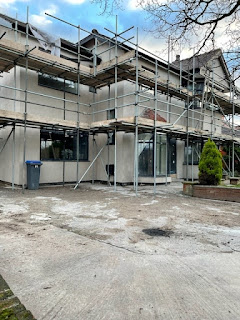In the end, he only took 2 of the
items prescribed. I know there are plenty of provisions for people on certain benefits,
or who have certain health conditions which exempt them from paying for their prescriptions.
But there will be others, perhaps like this man, who for whatever reason simply
haven’t got enough money. I wondered how many times this dilemma gets played
out every day. Such situations provide us with a glimpse of the real costs of
health care. However, depending on what the prescription was for, the real cost
of Mr Jimmy’s health care may well have been heavily subsided.
Our little dog Dylan recently became
seriously ill with a liver infection. He required emergency veterinary care and
then ongoing in-patient care for four days last week. Not a single decision,
test, or treatment was undertaken until we had given our consent and signed to
say we would pay the costs. Those costs mounted up at an alarming rate over the
four days, and ended up north of £4000. Thankfully we have pet health
insurance, but even this has its limits. Sadly, he is still unwell, but he is getting
better each day. The experience has been salutary in reminding us of how
fortunate we are in the UK to have a National Health Service that is almost
completely free at the point of service.
It is not the same for many other
countries; notably in the US, where health care is largely private health insurance
based, or for those who qualify, Medicaid is available. Since the pandemic started
nearly 77 million people now receive Medicaid, an increase of some 10%. Each
one of these additional Medicaid enrolments represents an individual and/or family
whose income has fallen low enough for them to qualify. This doesn’t reflect
well for the world’s largest economy. The US also spends more on health care
than any other country. Currently this stands at £8,136 per person each year.
This compares with £3,371 per person in the UK, the world’s fifth largest economy.
What I also find interesting is
that in many States in the US, people on Medicaid will be charged for pitching
up at A&E for something that is not an actual emergency. This is a cost the
individual has to bear themselves and is not covered by Medicaid. I wonder what
would happen to the current extraordinary demand being experienced by emergency
and urgent care services in the UK, if such a charge was levied. I would expect
overnight attendances would fall by at least a third.
However, such a scenario is unlikely
to ever happen in the UK. Likewise, we are unlikely to consider the suggestion
made last week by Martin Hirsch, the Head of Hospitals in Paris, who raised the
question of whether individuals who had refused the Covid-19 vaccination ought
to be charged for emergency and critical care should they become seriously ill
with the virus. His suggestion is fuelled by the frustration caused by difficulties
facing the French health care system similar to those here in the UK. Just as
here in the UK, many French hospital beds are filled with Covid-19 patients, 80% of
whom are unvaccinated. These beds cannot be used to reduce the waiting lists of
folk who may be facing life-limiting conditions. Hirsch says this is unfair.
One day in critical care costs
the French taxpayer £3,850. The cost of the vaccination is £16.60 per dose. There
is a ‘pay for your health care and get reimbursed’ approach to health
care provision in France. People have to pay up front for most health care and
are then reimbursed by the State, although it is not a 100% full reimbursement.
Even so, I don’t think Hirsch’s suggestion will gain much traction. Like health
care services everywhere, nobody wants to get into the situation of patient selection
– do we make smokers pay for lung cancer treatment or charge those who are morbidly
obese because they eat too much? I don’t think so.
The NHS, like many other international health care systems, has always provided comprehensive and unconditional health care to everyone who needs it. It’s a service provided by professionals who are non-judgemental in the way they use their skills, knowledge and experience to help others at a time where the individual cannot help themselves. The provision of care and treatment should be and is often free from any economic, social, cultural or political constraints. In the UK, health care is also largely free at the point of accessing it.
However, not every cost can be measured in monetary terms. The last two years have shown what a huge emotional and physical price has been paid by those working in health and social care services across the UK. There can be no denying the huge cost in terms of mental health and wellbeing there has been for many providing care during the pandemic. Sadly, we are not done yet. Let’s remember to be there for each other. Likewise, let’s remember these challenges will pass.




